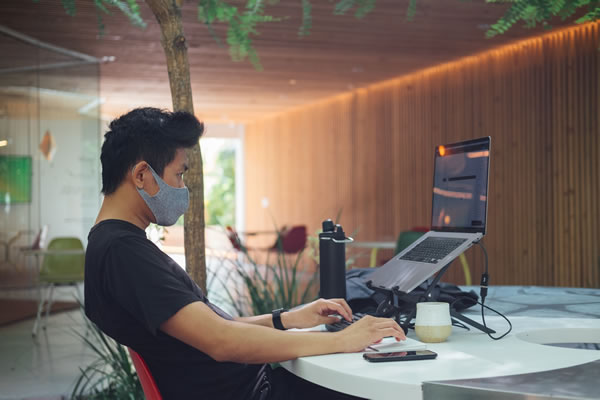Due to the pandemic, many enterprises have quickly mobilized large numbers of employees to work from home while keeping essential workers in the office. A recent ISG study reveals a surprising fact: enterprises are seeing their costs drop by $10K/day while productivity increasing by 30% for employees working from home. This gives rise to a tale of two offices coming out of the pandemic:
- The ‘new normal’ physical office
- A more secure home office
What are we learning during the pandemic about the technologies and processes that are most effective for working from home? What new technologies and processes must enterprises put in place to protect employees returning to the physical office?
A Surprising New Role for Security
Before the pandemic, security meant protecting the enterprise data, networks, and facilities from intruders. Now, security protocols must also include protecting the health of workers, customers, and vendors from the virus.
- Office occupancy will be reduced to enable social distancing. Time will be allocated between meetings for conference room sanitization. Infrared sensors will track room usage and remote UV lamps and ionization sprayers will sanitize rooms in between use. Access to the office will include thermal scans and COVID-19 testing — all biometrically authenticated and protected by stringent cybersecurity — to provide worker safety while maintaining privacy.
- Remote employees, on the other hand, create a different set of security concerns. How do employees secure their home office? How do they isolate their work environment from their home network, including home IoT, home gaming systems, or family members connecting to online schooling? When the pandemic hit, some employers were well prepared to send workers home with the necessary cyber-security in place. They had already adopted a zero trust model, enabled access to secure cloud-based virtual desktops, replaced vulnerable VPNs with micro-segmentation, and provided excellent employee training on security best practices such as how to avoid phishing attacks. Other employers were not so fortunate, with some falling victim to the 400% increase in pandemic related cyber-attacks. According to Unisys Security Index 2020, the focus for many shifted from security to the virus, leaving them open to cyber-attacks.
AI and IA Are More Important than Ever
AI is already being used in chatbots to help both remote and office workers resolve common IT problems. During the pandemic, when service desks saw a 54% increase in call volumes, AI scaled up automatically to handle many of these calls – something not easily done with human service desk agents. Looking ahead, AI will go beyond the help desk – becoming a trusted advisor to guide employees through their tasks.
Automation was in place prior to the pandemic, but its value became exceedingly clear when work had to be performed with a minimal number of people in the office. Beyond the pandemic, automation will be married with AI to provide intelligent automation that is capable of adapting as business needs change. For example, an employee suddenly working from home could, with IA, be quickly and automatically re-onboarded and re-provisioned with the tools needed to work from home – a laptop, collaboration tools, and so on. AI and IA will appear in our video conferencing, perform data searches for us in the background, and suggest connections with colleagues to help us do our jobs more effectively.
AI and IA are always available, provide a consistent experience, and use natural language processing to serve a global workforce.
IT Support Must Be Tailored to Personas with Very Different Needs
The massive mobilization of millions of employees to work-from-home for the first time, coupled with the need to provide contactless support for workers remaining in the physical office, have underscored the need for creative support options.
- Employees working from home will, of course, use AI to resolve many problems. And when they need in-person support, they will use merged reality to connect with remote experts who can see what the worker sees and can quickly guide them to a resolution.
- Large campuses will make use of kiosks where employees can open an IT locker with their badge, insert their broken device, and retrieve a working replacement the next day. This eliminates the need for any human interaction and can be used 24/7.
- Connected with the kiosks are tech cafés – dedicated spaces where users can safely get in-person support when required.
- And finally, employees using shared equipment and with no time to talk to the service desk need a simple button that they can push to create a ticket to get a field services engineer to fix the problem with no interaction with the employees.
The Human Side – Sentiment Analysis
Ensuring employee satisfaction is important no matter what category of worker, but it’s easy to see why a massive and sudden increase in remote work could create stressful or disappointing situations for employees, lessening their engagement and productivity, and even make them retention risks.
To forestall those risks, employers need to be equipped with sentiment analysis technology that collects data on users’ interactions with IT, ascribes an emotion to each interaction, and highlights trends, positive and negative, that leaders can use to determine where they need to take action.
As the ranks of remote workers grow and employers strive to maintain the corporate culture and a collaborative workforce, sentiment analysis will be a vital tool for employee engagement and retention.
















Comments are closed.